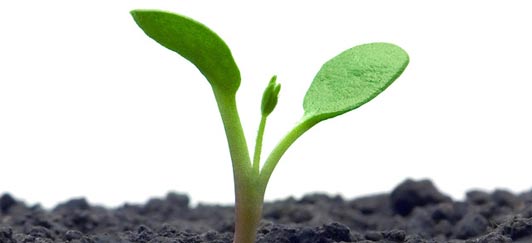The production of every product uses resources and creates waste.But, if you’d like to minimize the unfortunate aspects of the production of the things you buy, pay attention to certifications. Third party certifications give us measurable standards by which we can compare products, and are a very useful tool. Textile products can only be certified according to Oeko-Tex Standard 100 if all components comply with the required criteria-for an item of clothing this could be in addition to the outer fabric e.g. threads, prints, buttons/zips/studs or any other accessory parts. Here I will show you something about Oeko-Tex Standard 100.
So first question, what is Oeko-Tex?
The founder of the International OEKO-TEX® Association is Hohenstein Hohenstein in German. Since 1992, The German Heinstein Institute has been committed to the sustainable development of the textile industry and to the innovation of the textile industry and the garment industry all over the world.
Next Question,what does OEKO-TEX® Standard 100 certified mean?
Oeko-Tex Standard 100 or Öko-Tex Standard 100 (sometime misspelled Oktex) is an independent testing and certification system for textile products from all stages of production (fibres, yarns, fabrics, ready-to-use end products, including accessories) along the textile value chain.The label, ‘Confidence in Textiles’ of the product-related Oeko-Tex Standard 100 (textiles tested for harmful substances) is supplemented by the certification of environmentally friendly production facilities according to Oeko-Tex Standard 1000 and by the product label Oeko-Tex Standard 100plus for products tested for harmful substances from environmentally friendly production.
Thirdly,how to get oeko tex certificate?
Textile products can only be certified according to Oeko-Tex Standard 100 if all components comply with the required criteria – for an item of clothing this could be in addition to the outer fabric e.g. threads, prints, buttons/zips/studs or any other accessory parts. Extent and requirements of Oeko-Tex testing for harmful substances depend on the intended use of a textile product – the more intensive the skin contact, the stricter the limit values that may not be exceeded. There are four product categories: 1. I – Items for babies and infants (up to 36 months of age) 2. II – Items with direct prolonged or large-area skin contact 3. III – Textiles without or with little skin contact 4. IV – Furnishing materials (for decoration purposes)
After successful laboratory testing and signing of a declaration of conformity the manufacturer receives the Oeko-Tex certificate for their product which is valid for one year. After a repeat test, existing certificates can be extended for a period of one year in each case.
Organisation
The global standard is issued by the International Association for Research and Testing in the Field of Textile Ecology (Oeko-Tex) with headquarters in Zurich (Switzerland). It currently includes 15 neutral test and research institutes in Europe and Japan with contact offices in over 70 countries around the world. The internationally standardized criteria catalog for testing for harmful substances is regularly modified and expanded.
Test criteria
The test criteria of Oeko-Tex Standard 1000 include, among others:
- exclusion of environmentally harmful technologies, chemicals and auxiliary materials (e.g. ban of chlorine bleach)
- compliance with guide values for waste water and exhaust air treatment
- economical use of energy resources
- avoidance of noise and dust pollution
In addition to this the standard stipulates compliance with social criteria such as certain minimum requirements for workplace safety, ban on child labour/discrimination/forced labour or adequate working times/holidays/wages.
Laboratory tests and product classes
OEKO-TEX® testing for harmful substances always focus on the actual use of the textile. The more intensive the skin contact of a product, the stricter the human ecological requirements to be met.
Accordingly, there are four product classes:
Product class I: Textile items for babies and toddlers up to 3 years (clothing, toys, bed linen, terry cloth items etc.) Product class II: Textiles used close to the skin (underwear, bed linen, T-shirts etc.)
Product class III: Textiles used away from the skin (jackets, coats etc.)
Product class IV: Furnishing materials (curtains, table cloths, upholstery materials etc.) Certification
The requirement for certification of textile products according to OEKO-TEX® Standard 100 is that all components of an item have to comply with the required criteria without exception – that means in addition to the outer material also sewing threads, linings, prints etc. as well as non-textile accessories such as buttons, zip fasteners, rivets etc.
Significance
Oeko-Tex Standard 100 is the product label for textiles tested for harmful substances with the largest prevalence worldwide. More than 8,500 manufacturers in over 80 countries currently participate in Oeko-Tex certification (as of 12/2009). To date the Oeko-Tex Association has issued with 100,000 certificates for textile products of all stages of production (as of 12/2009).
According to a consumer survey by GfK in 2006, the label ‘Confidence in Textiles’ has a supported customer awareness level of over 46% in Germany. A consumer surveys by BBE Retail Experts carried out in seven European countries (Austria, Switzerland, France, Italy, Spain, Portugal, Netherlands) in 2008 found an average awareness level of 42% for the Oeko-Tex label.
In our daily life,if you buy some textile products,please remember to check if there is a label said “OEKO-Tex’’. Dont forgets it will be valid within one year since certificated. Take care and have a great and healthy life, should be our common goal.

